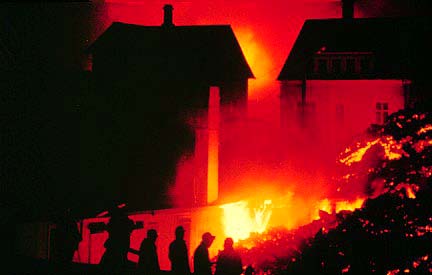Techniques for Cooling Lava

http://volcano.und.nodak.edu/vwdocs/volc_images/europe_west_asia/heimaey/heimaey.html
The lava was initially cooled with fire pumps and hoses, later in the effort large pumps were leased from the US military and several fire fighting boats were used. Once the advancing front of the lava had been cooled the lava would start to pile up behind the solidified front. At this point bull dozers were used to construct roads on the crust of the still molten lava, and large plastic pipes were laid on the top of the lava flow. The fight against the lava took place on several fronts. Initially much effort went to protecting the harbor, the lava was stopped less than 100 yards from closing the harbor, and it significantly reinforced the breakwater. Possibly as a result of the blocking of the lava near the harbor a new flow started into town. This flow was also stopped, but many buildings were lost to the lava. Many buildings were also buried and set on fire by tephra, volcanic ash.
At the peak of pumping about 1.3 cubic yards per second of water was pumped onto the lava. At this rate it took about 2 weeks to cool a three acre area to a 15 yard depth. Once an area stopped steaming the hoses were moved, as the most effective cooling was the release of energy in steam. The cooling was also greatly aided by the water penetrating through fissures and cracks in the rock.

http://volcano.und.nodak.edu/vwdocs/volc_images/europe_west_asia/heimaey/heimaey.html
